Danielle Whetstone
Client Success Specialist | C Squared Social
In a digitally savvy world, it’s no new news that an easy-to-navigate, visually appealing website is a powerhouse, must-have tool.
But while we could talk ad nauseam about best practices for web page design, reducing bounce rates, and text-to-graphic ratios, we’re focusing on the related but separate, increasingly more popular cousin to the webpage, the landing page.
Its slimmed-down, sleek functionality offers a lot of versatility. But let’s make a few clarifications first.
What’s the difference between a landing page and a web page?
Think of a website’s collection of web pages as a general practitioner. For common ailments, broken bones, general diagnosis… your family doctor is your go-to source for basically everything health related. They may have a focus in their medicine, but they treat the gamut, from kids to adults and seniors. That’s your website. The first point of reference for your brand, with a comprehensive overview of who you are and what you do.
However, family doctors often refer patients to a specialist who focuses on one thing and one thing only. The specialist, in this case, is a landing page. It serves one distinct purpose.
What is the purpose of a landing page?
A landing page’s sole purpose is to capture a visitor’s contact information, typically in exchange for a resource or something of value. That could be anything from a downloadable ebook or guide to more in-depth information on a product or an offer. In short, a landing page is a lead generation tool.
Speaking of short, that’s exactly how long a landing page should be. Keep in mind this is not a substitution or mirror of your website’s home page. And while your website should always contain lead capture tools and the standard “contact us” page, a landing page is a standalone tool with very specific information, limited navigation, and a clear Call to Action (CTA).
For example, you’ve just released a hot new product or service, and you’re trying to drive sales for it. Redirecting to your website might cause a user to drop off, get overwhelmed, or be disinterested with the onslaught of all your other products. But redirecting to that specific product or service, without distraction, can be a great way to increase conversions.









